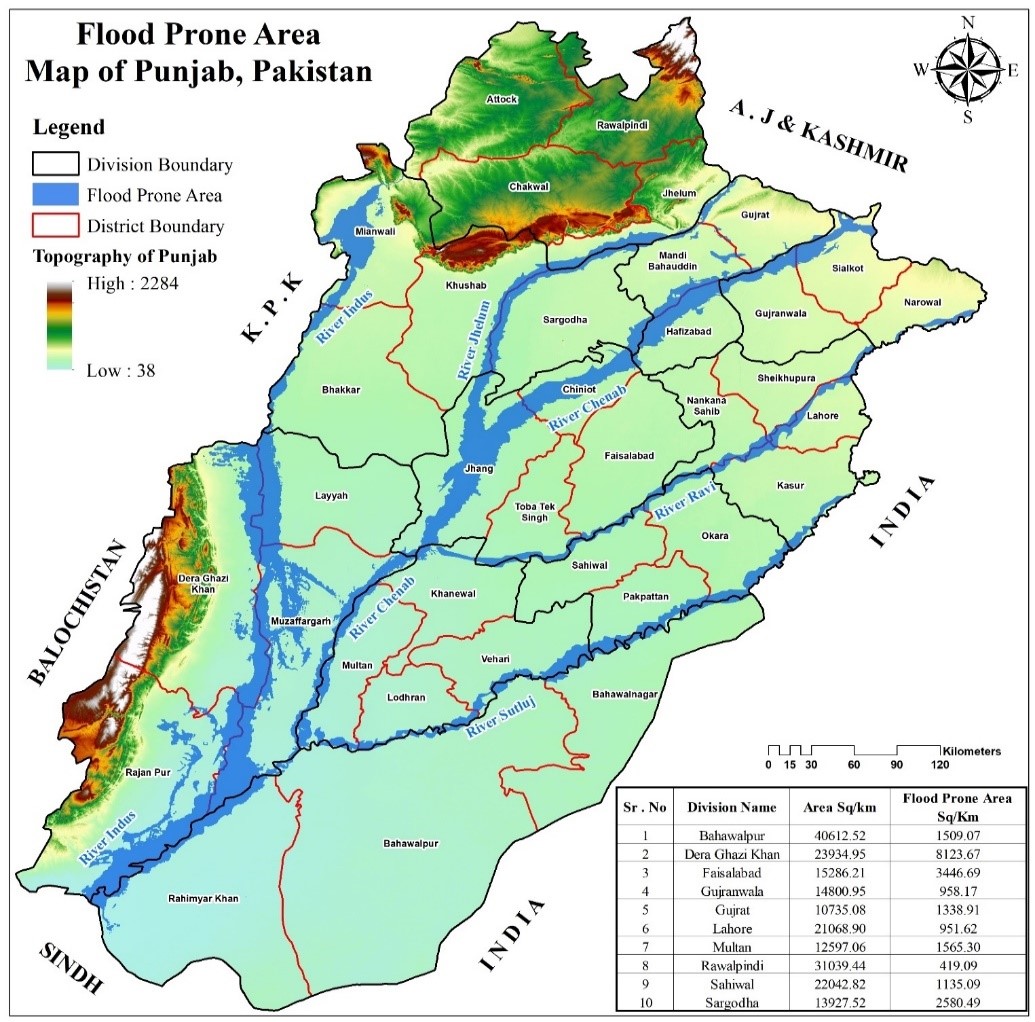Exploring the Nature-based Solution (NbS) to Flood Risk Reduction in the Punjab, Pakistan
Keywords:
Flood Risk, Punjab, NbS, Environmental Governance, Flood-Prone RegionsAbstract
The history of floods in the province of Punjab is as old as the evolution of early human settlement in this “land of five rivers” named Harappa some five thousand years ago. The annual wet Monsoon brings rain, with changing climatic patterns. Similarly, the occurrence of floods in many parts of Pakistan has also shown a changing trend that has never been experienced before. This study aims to predict the area in Punjab. The study shows that 40.17% and 36.06 % population of Dera Ghazi Khan and Faisalabad divisions are at risk due to floods. District level Muzaffargarh 3318.4 square kilometers, Rajanpur 2293.93square kilometers (D.G Khan), and Jhang with 2170.63square kilometers (Faisalabad) are flood-prone areas in the Punjab. In recent years, the researcher’s interest has increased in identifying and understanding the role of nature-based solutions (NbS) in reducing flood risk as well as their duration, magnitude, and frequency. In other words, NbS primarily aimed to reduce flood hazards by using indigenous knowledge of the local population, altering and managing land use, reservoir maintenance, and river channels. Further to this, the potential use of NbS can improve integrated water management, lessen the risk of floods and improve environmental governance in the region. The findings propose how to move forward with the influence of NbS for sustainable flood management strategies, which ultimately improve the well-being of millions of people living in flood-prone regions. This will also help formulate policies, and findings can be generalized for other similar parts of South Asia as well as other parts of the world.


















